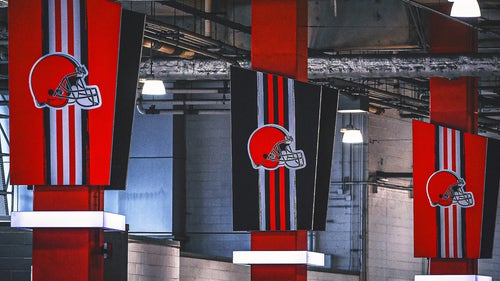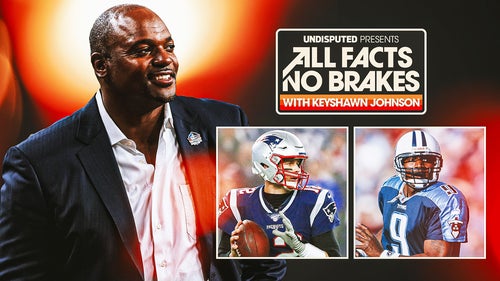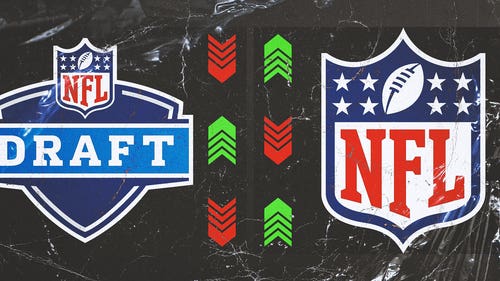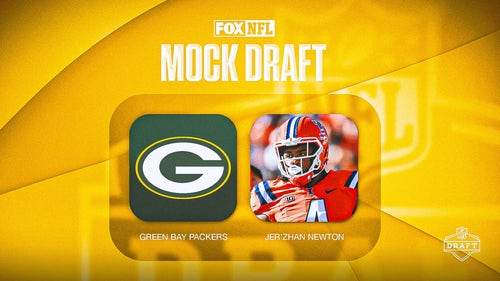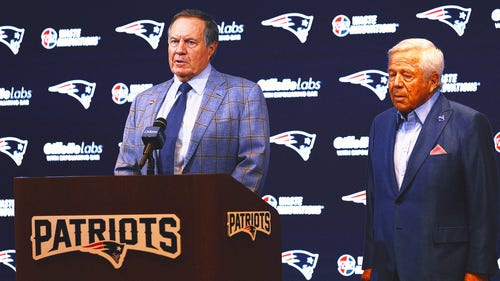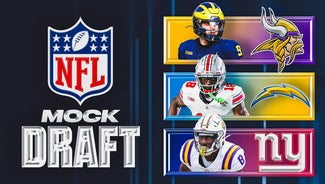
Are QBs judged by college success?
Winning isn’t everything when it comes to the NFL’s evaluation of quarterback prospects.
It sure does help bolster their draft stock, though.
NFL starters — especially the elite ones — have typically enjoyed collegiate success on the scoreboard. Twenty-five of the league’s 32 teams field passers who had winning records for their football alma maters. Most of those quarterbacks also entered the NFL coming straight off their best NCAA season.
According to NFL personnel guru Bill Polian, both of those elements figure “quite a bit” into the scouting process. College legacies are measured just like arm strength, accuracy and Wonderlic scores.
“In many respects, you’re going to be asking him to carry your team in the NFL,” Polian told FOXSports.com. “If he can’t carry his team at the collegiate level, which is quite a bit lower in terms of the level of competition, what makes you think he can do it at this level?”
That’s the challenge in grading several of this year’s top prospects.
The college resumes and pre-draft workouts of Stanford’s Andrew Luck and Baylor’s Robert Griffin III speak for themselves. They are cemented as the draft’s first and second overall picks by Indianapolis and Washington respectively.
It gets much trickier with the next wave of prospects.
Ryan Tannehill, who also is an expected top 10 selection, was only 6-6 as the Texas A&M starter in 2011. Arizona State’s Brock Osweiler, another potential first-round choice, was 7-8 in a three-season span. That includes a 6-7 mark in 2011.
Similar questions surround mid-round prospects like Arizona’s Nick Foles and San Diego’s Ryan Lindley. The Wildcats were 4-8 in Foles’ senior season; the Aztecs finished 8-5 but Lindley’s completion percentage of 53.0 was five points lower than during the 2010 campaign.
“No question it is a challenge,” Atlanta Falcons general manager Thomas Dimitroff said. “It’s important as talent evaluators that we make sure to look at everything.”
Dimitroff and his staff went through that exercise in 2008 with Matt Ryan. The Miami Dolphins and St. Louis Rams had the draft’s top two picks. Both had needs at quarterback — in fact, the Dolphins still do — but neither was sold enough to choose Ryan.
The Falcons, though, recognized that Ryan thrived at Boston College despite a supporting cast that didn’t have a single skill-position player make it to the NFL. With better talent around him in Atlanta, Ryan has led the Falcons to four consecutive winning seasons for the first time in franchise history.
“We understand that from (college) program to program there are positives and negatives and winning and losing is sometimes not directly related to the quarterback,” Dimitroff said.
Ex-Denver Broncos general manager Ted Sundquist said the won-loss debate was heated between the team’s scouting and coaching staffs when it came to Jay Cutler in the 2006 draft. Vanderbilt was 11-35 with Cutler under center.
“Personnel people tend to look at potential, productivity and that sort of thing,” Sundquist said. “You have to fight through the coaching staff’s perception that, ‘Yeah, he has all the tools but ultimately he’s not able to rally the troops and get the program to win.’ It can be a problem because of perceived bias. The biggest thing you have to do then is convince the coaching staff to understand where he came from.”
Sundquist successfully argued for Cutler ahead of more storied Southern Cal quarterback Matt Leinart, who was playing with future NFL talent like running backs Reggie Bush and LenDale White and wide receivers Steve Smith and Dwayne Jarrett. Cutler is now considered one of the league’s top quarterbacks with Chicago. Leinart and former University of Texas standout Vince Young, whose teams met in the 2005 national championship game, both remained unsigned this offseason as free agents.
“In the case of Jay, this was an exceptionally elite talent at a school that was having trouble attracting average talent,” Sundquist said. “I’m not picking on Vanderbilt. I had to deal with it at the Air Force Academy. (Former NFL defensive tackle) Chad Hennings stood out among the other guys like a sore thumb because he was an elite prospect. Those guys don’t come along very often.”
Neither do franchise quarterbacks, which puts high-drafting teams like Cleveland and Miami on the spot when it comes to Tannehill. Based solely on pre-draft passing drills, Tannehill showed earmarks of being the ideal choice to run the West Coast-style offense that the Browns and Dolphins will be deploying.
But the magic that Tannehill displayed when converting from wide receiver to become Texas A&M’s starting quarterback midway through his junior season wasn’t there in 2011. The Aggies collapsed so badly when losing significant leads in five of six losses that head coach Mike Sherman was fired.
Sherman is now Miami’s offensive coordinator so his input should carry gravitas if Tannehill remains available with the No. 8 overall pick.
“The 6-6 (record) talk doesn’t bother me as much as the fact he just hasn’t had the experience,” said Polian, who scouted Tannehill extensively last year when he was president of the Indianapolis Colts. “I’ve talked to Mike Sherman at length about him so I understand the situation. Tannehill just hasn’t had a lot of opportunity to play the position.
“On one hand, there’s lots of upside. But he’s nowhere near ready to play like (Luck and Griffin) despite the fact he has really outstanding tools.”
However the tools to evaluate quarterbacks are used, general managers must hope they make the right draft-day decision. Unlike with QBs who may not have experienced much team success in college, GMs who make the wrong call may not get a second chance.







































































































































